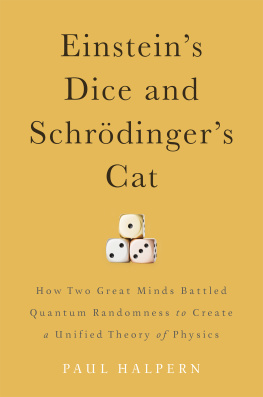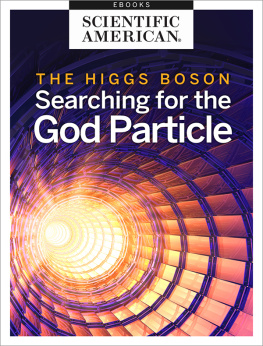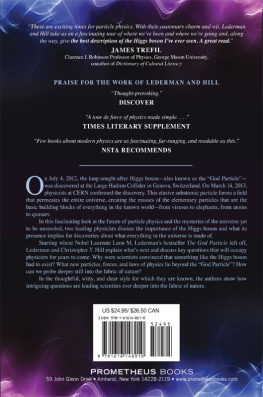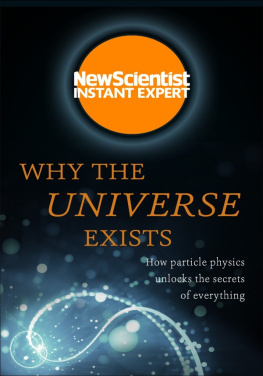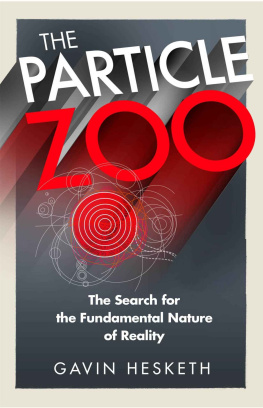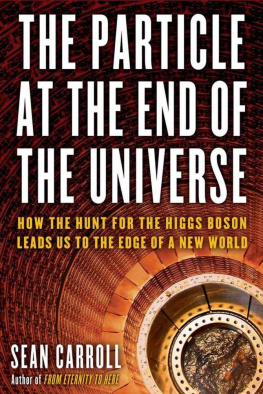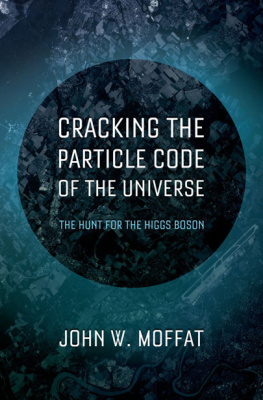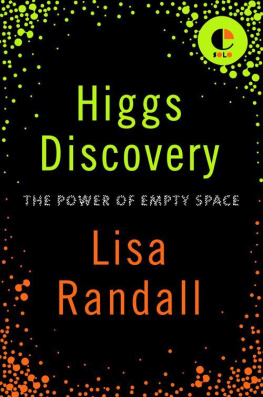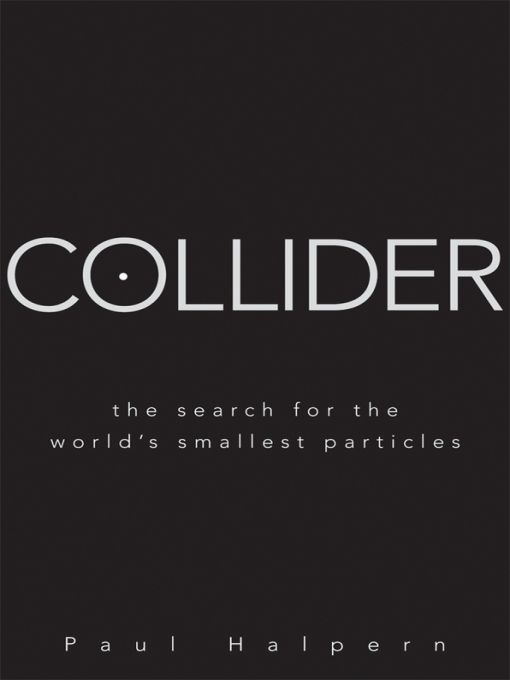Table of Contents
To Joseph and Arlene Finston
for their kindness over the years.
Now when chaos had begun to condense, but force and form were not yet manifest, and there was nought named, nought done, who could know its shape?
THE KOJIKO (JAPANESE RECORDS OF ANCIENT MATTERS), TRANSLATED BY BASIL HALL CHAMBERLAIN
Acknowledgments
Thanks to the many researchers at CERN who took the time to speak with me about their work and show me around the facilities during my visit. In particular, I would like to thank Michael Rijssenbeek, head of the Stony Brook group working on ATLAS, for his hospitality in discussing aspects of the project with me and for organizing a full schedule of meetings that were extremely informative. I would also like to express my deep appreciation to Venetios Polychronakos, Larry Price, Charlie Young, Ashfaq Ahmad, Adam and Katie Yurkewicz, Alexander Khodinov, Jason Farley, Julia Gray, and Jet Goodson.
Many thanks to David Cassidy and Adam Yurkewicz for reading over sections of the text and making suggestions. I would also like to thank J. David Jackson of UC Berkeley and the Lawrence Berkeley National Laboratory for his useful comments. Thanks to David Brin for kindly offering permission to include a quote from his novel Earth and to Herman Wouk for graciously allowing me to include a quote from A Hole in Texas.
I thank my editors at Wiley, Constance Santisteban and Eric Nelson, for their confidence, help, ideas, and vision, and my agent, Giles Anderson, for his thoughtful guidance and support.
I appreciate the support of my colleagues at the University of the Sciences in Philadelphia for this and other writing projects, including Phil Gerbino, Elia Eschenazi, Jude Kuchinsky, Brian Kirschner, Phyllis Blumberg, Steve Rodrigue, Sergio Freire, Bernard Brunner, Jim Cummings, Ping Cunliffe, Roy Robson, David Traxel, Justin Everett, Deirdre Pettipiece, K. Shwetketu Virbhadra, and many others.
Thanks also to my friends with whom I have exchanged many intriguing ideas throughout the years, including Fred Schuepfer, Michael Erlich, Fran Sugarman, Mitchell and Wendy Kaltz, Simone Zelitch, Doug Buchholz, Bob Jantzen, Robert Clark, Scott Veggeberg, Evan Thomas, Dubravko Klabucar, Elana Lubit, and the late Donald Busky.
Many thanks to my wife, Felicia, and my sons, Aden and Eli, for offering a steady source of love, warmth, and ideas. I also appreciate the support of my parents, Stan and Bunny Halpern; my in-laws, Joseph and Arlene Finston; Shara and Richard Evans; Lane and Jill Hurewitz; Janice, Richard, Jerry, Dolores, Michael, and Maria Antner; Dena and Amritpal Hatton; Aaron Stanbro; Kenneth, Alan, Beth, Tessa, Richard, Anita, Emily, and Jake Halpern; and the rest of my family.
Prologue
Journey to the Heart of the Large Hadron Collider
The ATLAS complex, home to the largest scientific measuring device in the world dedicated to particle physics, offers no hint of its grandeur from street level. From Route de Meyrin, the heavily trafficked road that separates its ground-level structure from CERNs main campus, it looks just like a warehouse near an ordinary filling station. Until I walked through the doors of its main entrance, I wasnt quite sure what to expect.
CERN, the European Organization for Nuclear Research (from the French acronym for Conseil Europen pour la Recherche Nuclaire), located on the Swiss-French border near Geneva, prides itself on its openness. Unlike a military facility, it allows anyone with permission to visit to snap pictures anywhere. Nevertheless, the dangerous and delicate nature of modern particle detectors warrants extremely tight protocols for entering the caverns where they are housed.
To tour a site that wasnt yet completely finished, I put on a helmet like that a construction worker would use. My hosts, researchers Larry Price and Charlie Young, were wearing radiation badgespractice for the precautions needed when the beam line would be running. After getting final clearance, they entered the code for the gateway to the inner sanctum, and it electronically opened.
Before journeying underground, we viewed the two enormous shafts used to lower the detectors components more than 350 feet down. I stood on the brink of one of these wells and gazed into the abyss. Awe and vertigo rivaled for my attention as I craned my neck to try to see the bottom.
Above the other well a giant crane was poised to lower parts down below. Transporting the original components of the detector from the various places they were manufactured and then putting them all together within such deep recesses in such a way that their delicate electronics werent destroyed surely was an incredible undertaking. The meticulous planning for such a complex project was truly phenomenaland it continues.
We took a speedy elevator ride down to what is called beam level. Now we were at the same depth as the beam pipes for the Large Hadron Collider (LHC)the vast ring that will be used to collect protons and other particles, accelerate them in opposite directions, and smash them together at record energies. The ATLAS detector is located at one of the intersection points where protons will collide head on. Half of the detector is above the beam level and half below to accommodate the floods of particles gushing out in all directions from these crashes.
The passages from the elevator to the control rooms and viewing platform are twisty, to provide barriers in case of a radiation leak. Most forms of radiation cannot travel through thick walls. Gauges sample the radiation levels to try to minimize human exposure.
The air in the hallways below seemed a bit stale. Pumped in by means of the ventilation system, it is monitored extremely closely. One of the components of the detector is liquid argon, cooled to only a few degrees above absolute zerothe baseline of temperature. If for some reason the argon heated up suddenly, became gaseous, and leaked, it could rapidly displace all of the breathable air. Warning systems are everywhere; so if such a danger were imminent, workers would be urged to escape via elevator before it was too late.
I finally reached the viewing platform and was astounded by the panorama in front of me. Never before had I seen such a vast array of sparkling metal and electronics, arranged in a long, horizontal cylinder capped with a giant shiny wheel of myriad spokesnicknamed the Big Wheel. It was like encountering the largest alien spaceship imaginabledocked in an equally vast spaceport.
If massive new particles are discovered in coming yearssuch as the Higgs boson, theorized to supply mass to other natural constituentsthis could well be the spawning ground. It would come not with the push of a button and a sudden flash but rather through the meticulous statistical analysis of gargantuan quantities of data collected over a long period of time. Not quite as romantic as seeing a new particle suddenly materialize from out of the blue, but statistics, not fireworks, is the way particle discoveries transpire these days.
The inner part of the detector had been hermetically sealed long before my visit, so it was impossible to see inside. Of the outer part, I could barely make out the vast toroidal (doughnut-shaped) magnets that serve to steer the charged elementary particles that escape the inner core. Researchers call these penetrating particles, similar to electrons but more massive, muons. Indeed the main reason for the detectors huge size is to serve as the worlds finest muon-catcher. Each spoke of the Big Wheel is a muon chamber.


